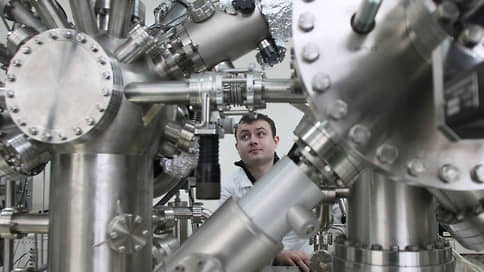Young scientists found a definition – Newspaper Kommersant No. 166 (7367) of 09/09/2022
[ad_1]

The number of scientific personnel continues to decline in Russia: in 2021, the number of people employed in the field of research and development decreased by 2.4%, to 663 thousand people, experts from the HSE Institute for Statistical Research and Economics of Knowledge (ISSEK) said. Against this background, the Ministry of Education and Science is making a new attempt to define the category of “young scientists” and enter into the legislation the norms on their state support. In this way, the government expects to stimulate the research necessary to achieve the scientific and technological sovereignty of the Russian Federation.
In 2021, the trend towards the reduction of scientific personnel in the Russian Federation continued – the number of people employed in research and development amounted to 662.7 thousand people, which is 2.4% and 8.8% less than in 2020 and 2012, respectively, according to ISSEK reference to Rosstat data. The decrease was recorded in all categories of personnel, except for technicians, who account for less than a tenth of all scientific workers. In particular, the number of researchers decreased over the year by 1.8%, to 340.1 thousand people, support staff – by 3.9%, to 152.1 thousand people, other personnel – by 4.3%, to 110 thousand people.
The volume of domestic spending on research and development (R&D) increased in current prices in 2021 to 1.3 trillion rubles. from 1.2 trillion rubles. in 2020. At the same time, when recalculated in constant 2010 prices, the indicator decreased by 4.9%, to 589 billion rubles. The share of domestic spending on research and development in 2021 decreased to 0.99% from 1.09% of GDP in 2020 (the country ranked 37th in the world in this indicator). Experts explain the decline by the fact that the GDP growth rate (plus 4.7%) then outpaced the dynamics of domestic spending on R&D. The main source of funding for science in the Russian Federation remains the state with a share of 67.5% of domestic spending on R&D, the share of business is 29%. For comparison: in the US, entrepreneurs account for 66.3% of costs, in China – 77.5%, in Japan – 78.3%, in Germany – 64.5%.
The publication of these statistics by ISSEK coincided with the posting by the Ministry of Education and Science on the regulation.gov.ru portal of the next version of the draft amendments to the law “On Science and State Science and Technology Policy”. The draft defines the concept of “young scientist” and establishes the right of such scientists to state support (as stated in the explanatory note to the document, this should encourage scientists who do not have a candidate or doctoral degree to make scientific discoveries). According to the plan of the authorities, such support will stimulate the research necessary to achieve the scientific and technological sovereignty of the Russian Federation.
In the amendments, it is proposed to consider young scientists as employees of scientific organizations under the age of 35, scientific and pedagogical employees of universities and organizations implementing additional professional programs, as well as scientists from other organizations engaged in scientific or scientific and technical activities. At the same time, scientific and scientific-pedagogical workers of older age (up to 45 years) will also be able to receive separate measures of state support if they have a doctorate in science. This, as the Ministry of Education and Science explained to Kommersant, will allow not to infringe on the rights of scientists over 35 years old who apply, for example, for housing certificates. The decision to provide state support measures to young scientists can be taken by the president, the government, regional authorities and the leadership of the Sirius federal territory.
It should be noted that in 2020, the Accounts Chamber noted the unsystematic and low effectiveness of measures to support young scientists, it was argued that the state does not have an understanding of how much money is invested in one scientist and what is the effect of such assistance. The vagueness of the concept of “young scientist” led to a difference in the data of Rosstat and the Ministry of Education and Science on their numbers. Different criteria for classifying researchers in this category unreasonably narrow the circle of recipients of state support measures, the press service of the Ministry of Education and Science explained. The Accounts Chamber noted that more certainty appeared after the adoption of the law on youth policy in the Russian Federation, which established a unified approach to defining this age group as a whole.
[ad_2]
Source link






